Junkyard Find: 1959 Renault Dauphine

French cars have been junkyard rarities in North America for decades now, which is an ongoing disappointment for those of us who enjoy poring over machinery that ranges from fascinating to baffling in our local Ewe Pullets. I discovered a Mexican-market '06 Peugeot 407 in a Denver boneyard, earlier this year, and thought years would pass before the next time I'd hear the ghosts of André Citroën, Louis Renault, and Armand Peugeot singing La Marseillaise over a car graveyard.
Then I learned that three Renault Dauphines had hit the regular inventory at the Pick-n-Pull in San Jose, California. I hopped a 737 out there soon after.
French cars were semi-mainstream vehicles in the United States for a good chunk of the 20th century, but their manufacturers began dropping out of our market during the last few decades.
Chrysler sold Simca 1100s (badged as 1118s and 1204s) in the USA through 1971. Citroën held out here until 1974. The final Renaults sold here were 1988 Medallions (though Renault HQ claims that we'll be able to purchase electric Alpine A110s here in 2027). Peugeot stuck it out until 1991, when the last new 405s hit American streets.
Of all those companies, Renault was the only one to score big-time North American sales success.
Taking over the American Motors Corporation in 1979 allowed Renault to sell Kenosha-built Alliances and Encores here (and to create the XJ Jeep Cherokee and very influential Eagle Premier), but the Dauphine climbed higher in the car-sales charts than any other Renault model to reach our shores.
Volkswagen was riding high in 1956, with more than 50,000 Beetles sold in the USA that year.
But then another rear-engined European import showed up, with a price tag similar to the Beetle's and two additional doors.
Not only that, the Dauphine's engine boasted water cooling, which added complexity compared to the 1930s-technology Beetle but made it possible to have a heater that worked (the Beetle's nearly-useless heater involved a heat exchanger on the exhaust, with associated danger of carbon monoxide in the passenger compartment).
In 1959, a new Renault Dauphine cost $1,645 (about $17,416 in 2023 dollars). Meanwhile, a new 1959 Beetle listed at $1,545 ($16,357 after inflation).
If you insisted on buying a new American-built car in 1959, AMC could get you into a Rambler business coupe for $1,821 ($19,279 now). If you wanted a new four-door car with a real heater that year, though, the Dauphine was by far your cheapest option.
My grandfather was doing a lot of ice racing in Minnesota when the Dauphine appeared in showrooms, so he bought one right away. It wasn't as quick on the ice as his Porsche 356-engined Beetle, but he held onto it until it rusted to nothingness (i.e., about five years later).
Renault sold plenty of Dauphines in the United States during the 1957-1960 period. During that time, it was the second-best-selling imported car in the nation, behind only the Beetle.
American Dauphine sales continued through 1966, but Renault never regained the sales glory it enjoyed here during the late 1950s.
There were multiple factors behind the decline of Dauphine sales at the dawn of the 1960s. One was the end of the Eisenhower Recession, which had forced car buyers to tighten their belts.
Another was the debut of the Ford Falcon as a 1960 model. The cheapest '60 Falcon four-door cost just $1,974 ($19,092 in 2023 dollars), and it was a genuine Detroit machine with a six-cylinder engine.
The Chevrolet Corvair also hit the scene as a 1960 model, and the four-door started at a mere $2,038 ($21,356 now). Plymouth's cheapest 1960 Valiant four-door had a $2,033 price tag.
To make matters worse for Renault and Volkswagen, BMC undercut both the Dauphine and the Beetle on price with the Austin Mini, which made its US-market debut as a 1960 model. It had only two doors, but cost just $1,295 ($13,570 today).
One advantage the Beetle had over its French rival was its standard four-speed manual transmission. The Dauphine had a three-on-the-floor manual until fairly deep into the 1960s.
The 1959 Beetle and its 36-horse, 1192cc boxer-four engine held the power edge over the Dauphine, which got 30 horsepower out of its 845cc straight-four. The Dauphine was lighter, but the Beetle still had the power-to-weight advantage.
For 1960, Renault began offering the Dauphine Gordini, which had an impressive 40 horsepower. One of the three Dauphines now residing at the San Jose Pick-n-Pull is a Gordini, and I'll write about it soon enough.
The blue 1960 Dauphine next to today's Junkyard Find will appear as a Junkyard Gem at Autoblog in the very near future. The Gordini is parked a couple of rows away, next to a Saab 95.
All three of those Dauphines were for sale on the SF Bay Craigslist site for months, with a price tag of $1,000 for the trio.
They had rusty bodies and sun-nuked interiors after sitting outdoors in Northern California for who-knows-how-many decades, but three Dauphines for a grand! Many of my car-freak friends in the Bay Area talked excitedly about buying them, but in the end, these now-rare French machines met a grim junkyard fate.
The Crusher awaits.
The "ruh-NALT" pronunciation was used by Renault USA for another decade or so.
Beep-beep! Wink-wink!
1959 Renault Dauphine in California wrecking yard.
Up to 40 miles to the gallon of gas.
1959 Renault Dauphine in California wrecking yard.
1959 Renault Dauphine in California wrecking yard.
1959 Renault Dauphine in California wrecking yard.
1959 Renault Dauphine in California wrecking yard.
1959 Renault Dauphine in California wrecking yard.
1959 Renault Dauphine in California wrecking yard.
1959 Renault Dauphine in California wrecking yard.
[Images: The author]
Become a TTAC insider. Get the latest news, features, TTAC takes, and everything else that gets to the truth about cars first by subscribing to our newsletter.

Murilee Martin is the pen name of Phil Greden, a writer who has lived in Minnesota, California, Georgia and (now) Colorado. He has toiled at copywriting, technical writing, junkmail writing, fiction writing and now automotive writing. He has owned many terrible vehicles and some good ones. He spends a great deal of time in self-service junkyards. These days, he writes for publications including Autoweek, Autoblog, Hagerty, The Truth About Cars and Capital One.
More by Murilee Martin
Latest Car Reviews
Read moreLatest Product Reviews
Read moreRecent Comments
- Tassos Obsolete relic is NOT a used car.It might have attracted some buyers in ITS DAY, 1985, 40 years ago, but NOT today, unless you are a damned fool.
- Stan Reither Jr. Part throttle efficiency was mentioned earlier in a postThis type of reciprocating engine opens the door to achieve(slightly) variable stroke which would provide variable mechanical compression ratio adjustments for high vacuum (light load) or boost(power) conditions IMO
- Joe65688619 Keep in mind some of these suppliers are not just supplying parts, but assembled components (easy example is transmissions). But there are far more, and the more they are electronically connected and integrated with rest of the platform the more complex to design, engineer, and manufacture. Most contract manufacturers don't make a lot of money in the design and engineering space because their customers to that. Commodity components can be sourced anywhere, but there are only a handful of contract manufacturers (usually diversified companies that build all kinds of stuff for other brands) can engineer and build the more complex components, especially with electronics. Every single new car I've purchased in the last few years has had some sort of electronic component issue: Infinti (battery drain caused by software bug and poorly grounded wires), Acura (radio hiss, pops, burps, dash and infotainment screens occasionally throw errors and the ignition must be killed to reboot them, voice nav, whether using the car's system or CarPlay can't seem to make up its mind as to which speakers to use and how loud, even using the same app on the same trip - I almost jumped in my seat once), GMC drivetrain EMF causing a whine in the speakers that even when "off" that phased with engine RPM), Nissan (didn't have issues until 120K miles, but occassionally blew fuses for interior components - likely not a manufacturing defect other than a short developed somewhere, but on a high-mileage car that was mechanically sound was too expensive to fix (a lot of trial and error and tracing connections = labor costs). What I suspect will happen is that only the largest commodity suppliers that can really leverage their supply chain will remain, and for the more complex components (think bumper assemblies or the electronics for them supporting all kinds of sensors) will likley consolidate to a handful of manufacturers who may eventually specialize in what they produce. This is part of the reason why seemingly minor crashes cost so much - an auto brand does nst have the parts on hand to replace an integrated sensor , nor the expertice as they never built them, but bought them). And their suppliers, in attempt to cut costs, build them in way that is cheap to manufacture (not necessarily poorly bulit) but difficult to replace without swapping entire assemblies or units).I've love to see an article on repair costs and how those are impacting insurance rates. You almost need gap insurance now because of how quickly cars depreciate yet remain expensive to fix (orders more to originally build, in some cases). No way I would buy a CyberTruck - don't want one, but if I did, this would stop me. And it's not just EVs.
- Joe65688619 I agree there should be more sedans, but recognize the trend. There's still a market for performance oriented-drivers. IMHO a low budget sedan will always be outsold by a low budget SUV. But a sports sedan, or a well executed mid-level sedan (the Accord and Camry) work. Smaller market for large sedans except I think for an older population. What I'm hoping to see is some consolidation across brands - the TLX for example is not selling well, but if it was offered only in the up-level configurations it would not be competing with it's Honda sibling. I know that makes the market smaller and niche, but that was the original purpose of the "luxury" brands - badge-engineering an existing platform at a relatively lower cost than a different car and sell it with a higher margin for buyers willing and able to pay for them. Also creates some "brand cachet." But smart buyers know that simple badging and slightly better interiors are usually not worth the cost. Put the innovative tech in the higher-end brands first, differentiate they drivetrain so it's "better" (the RDX sells well for Acura, same motor and tranmission, added turbo which makes a notable difference compared to the CRV). The sedan in many Western European countries is the "family car" as opposed to micro and compact crossovers (which still sell big, but can usually seat no more than a compact sedan).
- Jonathan IMO the hatchback sedans like the Audi A5 Sportback, the Kia Stinger, and the already gone Buick Sportback are the answer to SUVs. The A5 and the AWD version of the Stinger being the better overall option IMO. I drive the A5, and love the depth and size of the trunk space as well as the low lift over. I've yet to find anything I need to carry that I can't, although I admit I don't carry things like drywall, building materials, etc. However, add in the fun to drive handling characteristics, there's almost no SUV that compares.



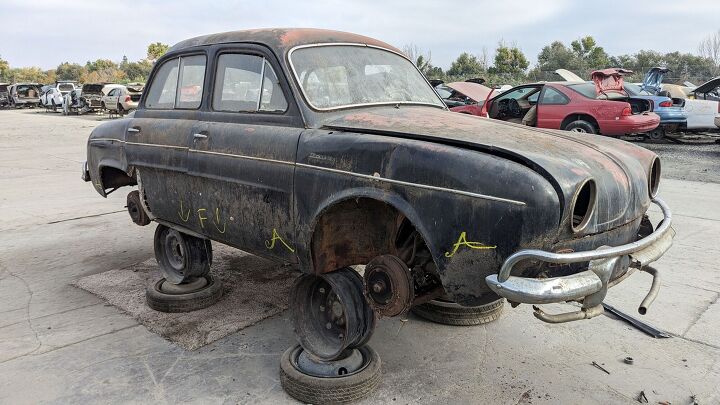













































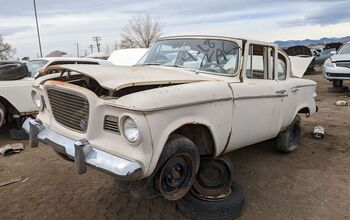
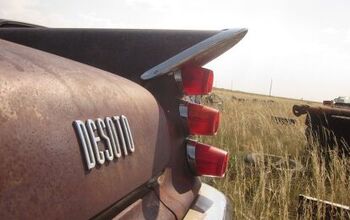
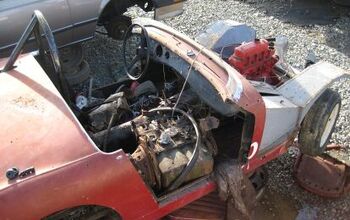
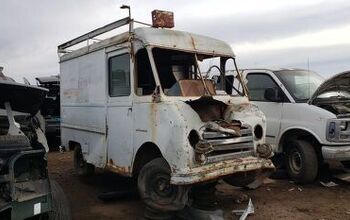
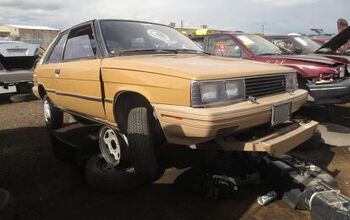











Comments
Join the conversation
When I was a kid....
there was a newspaper delivery man who drove a Renault Dauphine. He tied the door latch open with light rope so it wouldnt close and got out of the car to deliver the papers to each house. But the great part was that he left it in neutral when he got out and he let it roll. After he delivered a few papers he retrieved the rolling car and went on to the next set of houses. It was quite the feat of timing!
Yes it had a water-cooled engine for a much better heater than a beetle, BUT --
I had a 61, living in chilly Omaha. The engine, coolant and heater core are all in the back. The warm air (haha) was blown through a flattened insulation duct that ran under the car and then up into the front's heater inlets and defroster vents. If it was still warm by that time, and when it was REALLY COLD like it is in an Omaha winter, you might feel it. Otherwise you were scraping ice off the inside of the windshield and freezing your tail off.
I'm surprised the one sitting in the junk yard hasn't rusted completely away by now. Mine was close to dissolving by the late 60s when I traded it in on a VW and got $25 for it. Actually I had to beg them to take it because I had nowhere to put it.